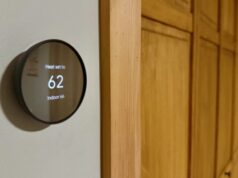
Rising energy bills and the shift to smarter, more sustainable homes have made energy management systems (EMS) an increasingly valuable tool for homeowners and renovators. Whether you’re building new, upgrading an older home or just want better visibility over your energy use, an EMS can give you real-time control over how, when and where you use power.
These systems aren’t just about monitoring. Many now integrate with smart appliances, solar PV systems, battery storage, and home automation to help you reduce waste, cut costs and lighten your environmental footprint.
What is an energy management system?
An energy management system is a combination of hardware and software that monitors, records and in some cases controls how your household uses electricity. At its most basic, it shows you where your power is going — but more advanced systems can automate usage patterns, shift loads to off-peak times, and optimise the performance of solar or battery setups.
EMS units usually include:
- A central controller or hub
- Circuit-level monitoring to track different appliances
- A digital interface (e.g. app or web dashboard)
- Integration options for solar, batteries, EV chargers, hot water systems or HVAC
Some EMS platforms are standalone, while others are built into smart home automation systems.
Benefits of using an EMS
1. Track your energy use in real time
An EMS gives you detailed insight into how much electricity you’re using — and when. You can see usage spikes as they happen, whether it’s the kettle at breakfast or the air conditioner during a heatwave.
2. Cut down on electricity waste
By identifying inefficient appliances or habits, an EMS helps you make smarter decisions. You might find a fridge that’s running too hard, lights left on overnight or a pool pump operating during peak times.
3. Lower your energy bills
Once you know your usage patterns, you can shift some of your consumption to off-peak periods or reduce unnecessary loads. Over time, this can lead to significant cost savings, especially if you’re on a time-of-use tariff.
4. Optimise solar and battery use
If you have solar panels or battery storage, an EMS can ensure that self-generated energy is used at the most effective times. Some systems even automate load shifting, such as running the dishwasher or charging an EV when solar production is highest.
5. Set alerts and automation
Many systems allow you to set usage alerts (e.g. when daily use exceeds a threshold), automate appliances, or create smart schedules — like cooling the house just before you get home.
What can you connect to an EMS?
A modern EMS can link to a wide range of devices, depending on the system’s complexity:
- Air conditioning or ducted heating
- Hot water systems (including electric storage or heat pump units)
- Solar PV and battery inverters
- EV chargers
- Lighting and dimmer switches
- High-load appliances like ovens, pool pumps and washing machines
Many EMS platforms use smart plugs or circuit sensors to monitor individual loads. The most advanced systems include AI-style automation, predictive scheduling and integration with weather forecasts to maximise solar efficiency.
Installing an EMS in your home
New builds
If you’re planning a new home, talk to your builder or designer about incorporating EMS hardware from the start. That way, sensors and wiring can be integrated into your electrical plan.
Existing homes
Most EMS platforms can be retrofitted. A licensed electrician will install sensors at your switchboard, link the system to your WiFi, and set up the software. Some simpler options — like smart plugs or appliance monitors — are plug-and-play.
Always make sure that any installation is carried out by a licensed electrician, especially when it involves hardwired connections or load control.
Choosing the right system
When picking an energy management system, consider:
- Compatibility with your existing setup (solar, battery, smart home devices)
- Level of detail in reporting — circuit-level, appliance-level or whole-house only
- Automation features — can it control devices or just report?
- Data access — mobile apps, desktop dashboards, integration with other platforms
- Upfront cost vs ongoing savings
Some energy providers also offer rebates or discounts for installing an EMS, especially if it’s paired with demand response programs.
Tips for using an EMS effectively
- Monitor your baseline usage for a few weeks to establish patterns
- Use the data to identify and swap out inefficient appliances
- Create schedules for high-load devices during off-peak hours or solar peaks
- Review your settings seasonally to adapt to changes in lighting, heating or cooling demands
- Check for firmware updates or system upgrades from your EMS provider
Smarter energy starts with better insight
An EMS helps put you in control of your energy, instead of guessing where your money’s going each month. Whether you’re looking to slash your bills, reduce your carbon footprint or get more value from your solar and battery setup, energy management systems offer powerful insights and automation tools.




